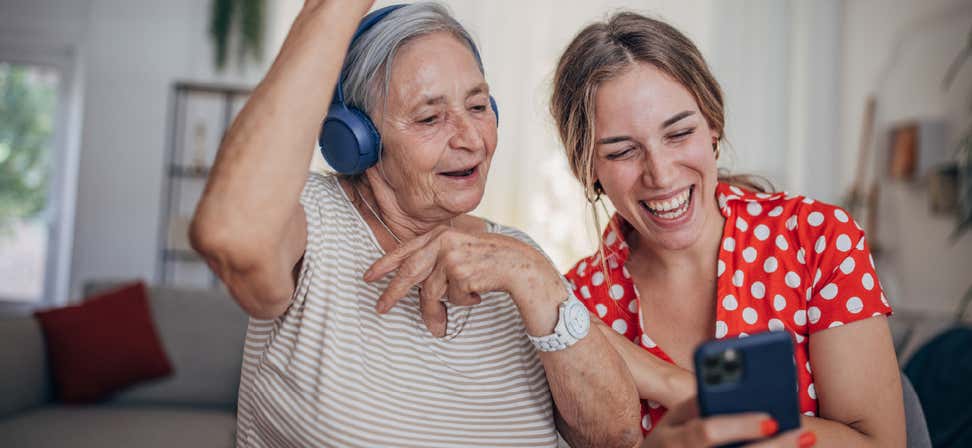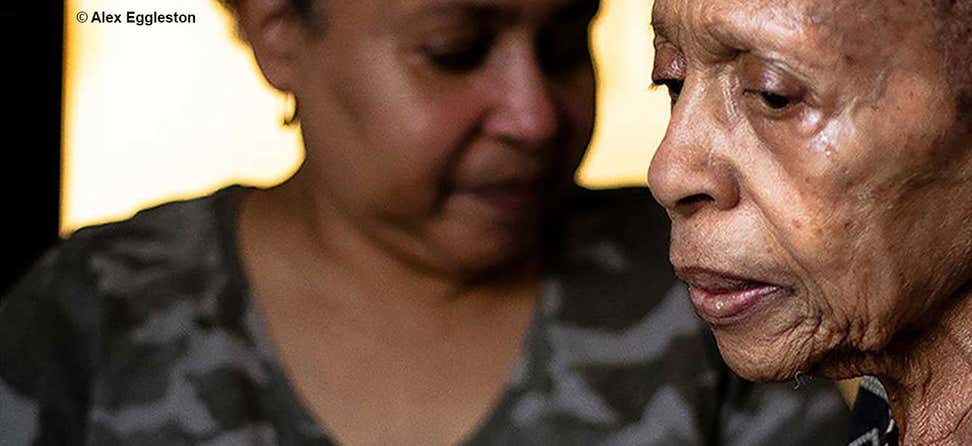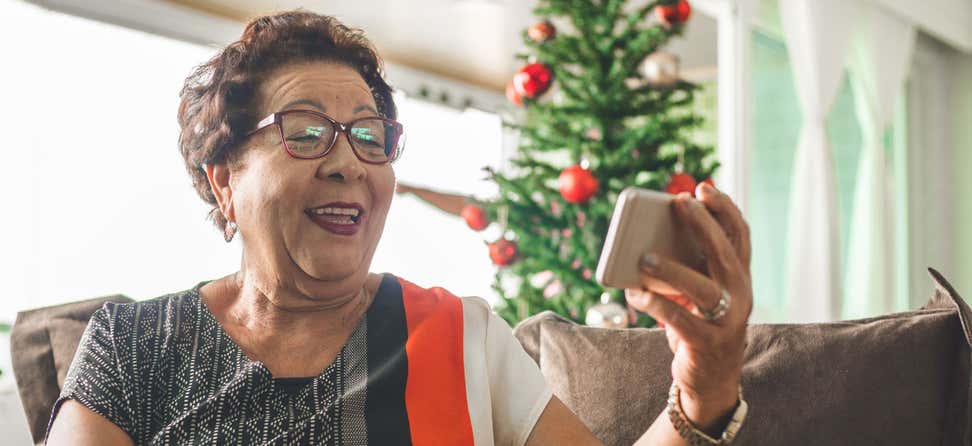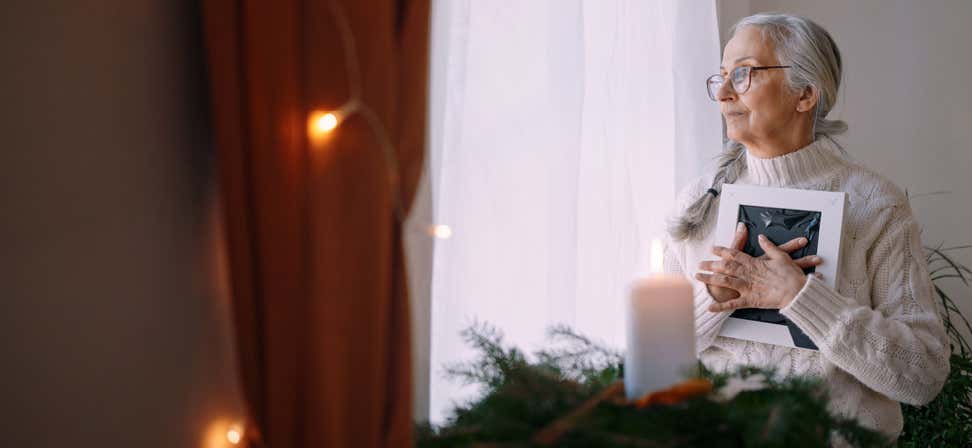We all need social connections to thrive. But for many older Americans, life’s later years bring a sense of solitude as they spend more and more time on their own. This social isolation—and the resulting feelings of loneliness—can have profound effects on mental and physical well-being and create a barrier to healthy aging.
Several experts explored this topic in depth during a breakout session, “Social Cohesion and Intergenerational Connections to Address Social Isolation,” at our 2023 Older Adults Mental Health Awareness Day (OAMHAD) Symposium.
What does it mean when a person is socially isolated?
Social isolation and loneliness are related, but they're not the same thing. Social isolation happens when a person has few social connections and limited regular contact with others. Loneliness, on the other hand, is the perception of being alone or separated from other people—and this perception causes feelings of distress.
“These are very distinctly different phenomena,” said OAMHAD session participant Colleen Galambos, PhD, Helen Bader Endowed Chair in Applied Gerontology at the University of Wisconsin Milwaukee. “People who are lonely are not necessarily isolated, and people who are socially isolated are not necessarily lonely.”
What percentage of older adults experience social isolation and loneliness?
Research has shown that social isolation and aging often go hand in hand. In the 2023 National Poll on Healthy Aging from the University of Michigan, one in three adults age 50 to 80 (34%) reported feeling isolated from others. While this was a major decrease from 2020 at the height of the pandemic, it's higher than what was reported in 2018.
Roughly the same number of older adults reported having infrequent contact (once per week or less) with people from outside their home. Thirty-seven percent of respondents stated they’ve felt a lack of companionship during the past year.1
What are the causes of social isolation in older adults?
There are many physical, psychological, cognitive, and social factors that put older adults at higher risk for social isolation and loneliness. These include:
- Chronic diseases and conditions
- Dementia
- Mobility challenges
- Sensory impairment (e.g., hearing loss)
- Depression and anxiety
- Low-quality relationships
- Disruptive life events (e.g., retirement, loss of spouse)
- Poverty
- Language barriers
- Lack of transportation
- Lack of family nearby
- Rural location
Certain populations—such as older women, LGBTQ+ people, and immigrants—are also thought to be at higher risk for social isolation and loneliness.
What does social isolation do to a person?
According to Galambos, “social isolation can be deadly.” It’s not an exaggeration: studies have linked being socially isolated with a 29% higher all-cause risk for mortality and a 25% greater risk for cancer mortality.2 Social isolation and loneliness have also been associated with higher rates of:
- High blood pressure
- Heart disease
- Weakened immune system
- Dementia, especially Alzheimer’s disease
- Functional decline (e.g., inability to drive, cook meals, pay bills, etc.)
Lonely older adults may have a greater tendency to drink alcohol, use tobacco products, and exercise less—all behaviors that can lead to further health complications.
Mental health can be severely impacted by social isolation as well, leading to clinical depression, anxiety, and suicidal ideation.2
How intergenerational connections can ease loneliness
Both one-on-one and group interventions have been found to help reduce isolation and loneliness in older adults. Specifically, there is evidence to support the positive effects of intergenerational programs on reducing loneliness, decreasing ageism, and strengthening ties across generations.
One such program highlighted in the OAMHAD session is offered through Lori's Hands, a nonprofit organization that aims to build positive partnerships between college students and people with chronic illness.
“These students make weekly visits to community members who are isolated, who have limited support systems, or who have unmet daily needs with activities like grocery shopping, housework, accessing resources, and more,” explained Executive Director Maggie Ratnayake. “As students offer tangible and social support, clients take time to share their lived experience with students.”
What makes Lori’s Hands so unique? Unlike visits from a home health aide or family member, which are often transactional in nature, the relationships students and clients form in this program offer mutual benefits. Students provide social and practical support (free of charge), and clients offer insights and wisdom that enhance the student's academic studies. Lori’s Hands students—who are studying for careers in nursing, public health, social work, and related fields—have shown improvements in career readiness as well as better communication skills, greater empathy, and a deeper understanding of the community resources available to support aging in place.
Among Lori’s Hands clients, longer duration in the program has been linked to measurably lower levels of loneliness. Pat Drake is a real-life example. She has been involved in Lori's Hands for more than three years, starting right around when the COVID-19 crisis hit. When her husband passed away and she discovered she had lung cancer, Drake found herself needing extra help at home. "It has made a great difference because I wasn't able to do all the things I wanted to do, and yet I wanted to live independently," she explained.
Today, Drake receives regular visits from students Jenna and Juliana, who perform tasks ranging from opening a bottle of her favorite cranberry juice to planting pansies in her window boxes. They’ve all gotten to know each other through casual conversations about school, family, and gardening. But perhaps most important to Drake is the added security and peace of mind these visits bring to her life.
I know when they're coming,” she said. “They are completely regular. They always show up on time and maybe even early. And I know that I'll be able to have these little things taken care of because it isn't much, but it means the world. It really does."
The bonds forged through Lori’s Hands tend to be powerful and enduring. “It's through this model that we've seen incredible and often unsuspecting intergenerational friendships blossom,” Ratnayake said. “Friendships that are daily improving the lives of older adults and people with chronic illness in our chapter communities.” Noting that loneliness impacts people at all ages and stages, she adds: “When we look at intergenerational programs, this could be the strongest approach to impacting multiple age groups with one intervention.”
Given the program’s success, Lori's Hands has launched two new chapters over the past three years and plans to continue to expand its footprint. To meet the growing demand, the organization has also begun offering trainings to other organizations and universities interested in starting similar intergenerational service-learning programs in their communities. Learn more about Lori’s Hands by visiting the organization’s website.
How can you overcome social isolation?
Beyond programs like Lori’s Hands, what are some additional ways you or an older family member can feel less lonely and increase your social wellness? A few options discussed during the OAMHAD session:
- Cognitive behavioral therapy (CBT): Talking to a licensed CBT therapist can help you change your social perceptions and improve your social skills to make it easier to build new friendships. Therapy can be done in person or online.
- Support groups: Bereavement, caregiver, mental health, and other types of support groups can help you find an emotional outlet, reduce stress, and make new connections. There are often online options for those who cannot attend in-person meetings.
- Senior centers: With nearly 11,000 facilities nationwide serving 1 million older adults, senior centers bring people together for meals, social and wellness activities, public benefits counseling, and much more. Learn what you can do at a senior center or visit the Eldercare Locator for help finding a center near you.
Want to know more about this topic? Visit NCOA's Social Isolation & Loneliness for Older Adults resource library.
Sources
1. P. Malani, et al. Trends in Loneliness Among Older Adults from 2018-2023. University of Michigan National Poll on Healthy Aging. March 2023. Found on the internet at: https://dx.doi.org/10.7302/7011
2. National Library of Medicine. Social Isolation and Loneliness in Older Adults: Opportunities for the Health Care System. Found on the internet at https://www.ncbi.nlm.nih.gov/books/NBK557969/
This project was supported, in part by grant number 90CSSG0048 and 90FPSG0051 from the U.S. Administration for Community Living, Department of Health and Human Services, Washington, D.C. 20201. Grantees undertaking projects under government sponsorship are encouraged to express freely their findings and conclusions. Points of view or opinions do not, therefore, necessarily represent official Administration for Community Living policy.










